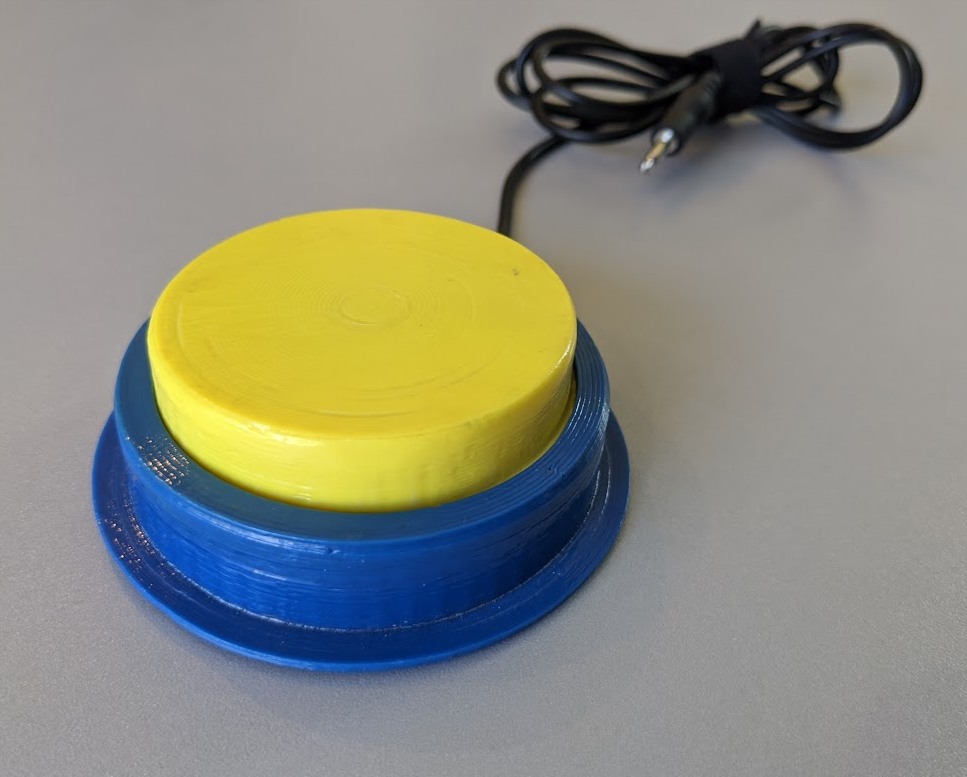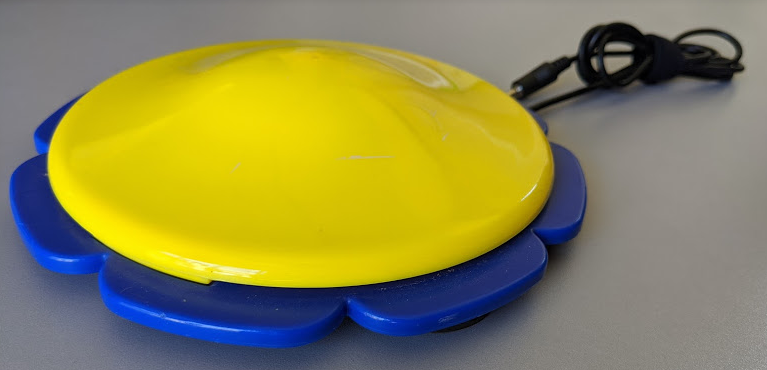This is one of my early switch designs. I think it's a fairly typical representation of many of the 3d printed adaptive switch designs I've seen. There's a big plunger on top, and it's held captive by a ring around the outside. And that ring is attached to the base somehow (in this case, it's cemented together). Inside, there is a microswitch, with the phono plug attached in a NO (normally open) configuration. It is functional, but it's pretty clunky, requires more force to activate than is desirable (it's ~ 150g ), and really doesn't have a great "feel" to it. At some point, I'd like to graph the force vs deflection. I think this would really help to quantify what I right now see as the "feel" of the switch.

The biggest distinction I've seen between commercial switches and 3d printed homemade ones is how the button is captured. As in the design above, 3d printed switches use a capture mechanism on the outside of the button, like this:

This design generally means that half of the height (or more) is really this ridge that isn't an activation surface. It means that there is a ring around the whole switch that basically "protects" the switch from being activated. When the whole point of these switches is to make it easier for someone to interact with the world, that's a big design flaw.
And that's why most of the commercial switches I've seen move the capture mechanism inside:

You can see an example of this design here:

 Mike Turvey
Mike Turvey
Discussions
Become a Hackaday.io Member
Create an account to leave a comment. Already have an account? Log In.